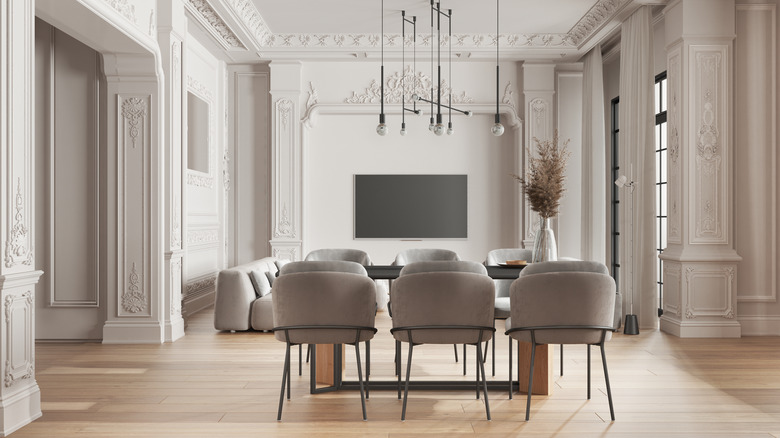Plaster Wall Advantages And Disadvantages
Gypsum drywall wall finishes hit the home building scene in the early 1900s. By the '50s, it had supplanted traditional plaster and lath wall construction. Since then, advances in drywall technology, such as water and mold-resistant products, combined with its low cost and ease of installation have helped drywall become the go-to wall finish in modern construction. However, plaster still holds a place in new homes and remodeling. Despite a few disadvantages, plaster walls have some significant advantages as well.
Plaster Wall Pros
Plaster Wall Pros
In addition to drywall's dominance, traditional plaster and wood lath walls have mostly given way to plaster veneer on blueboard and plaster on metal lath walls. Modern techniques allow homeowners to create unique plaster kitchen designs along with several other advantages.
Durability
Plaster walls are rugged and durable. Even plaster walls that consist of delicate wooden lath can withstand impacts and scratching better than a drywall surface. Veneer plaster applied over blueboard reduces construction time and is nearly as durable as traditional construction.
Sound Transfer Resistance
Due to plaster's natural material density, sound waves have difficulty penetrating a plaster wall. Drywall is less dense and typically much thinner than plaster, meaning sound travels more easily through the material.
Mold and Mildew Resistance
Plaster is not a source of food for mold. Although mold and mildew may feed on paint or dirt on a plaster wall, the wall underneath the mold will remain intact. Once the offending growth is removed, you'll still have an unmarred wall surface.
Plaster Wall Cons
Plaster Wall Cons
Plaster walls have a number of downsides to consider when compared to drywall construction.
Costly to Build
Plaster wall construction requires more skilled labor than drywall, which is more costly. Though drywall compound takes longer to dry and the project could stretch for days, the actual labor cost is lower than that for plaster. Drywall requires three steps to complete and includes vey dusty sanding. While plaster doesn't need sanding and the project is usually complete in a day, the amount of labor is greater overall.
Inconvenience
Plaster walls can be challenging to own. Hanging pictures or televisions requires drilling pilot holes and installing anchors. Textured plaster walls can be frustrating to keep clean. Running new electrical wires or accessing in-wall plumbing is more complex than simply cutting open a drywall wall. Retrofitting insulation into an exterior plaster wall is tricky because the plaster penetrates the lath to hold it in place.
Develops Cracks and Sags
Plaster continues to cure and becomes more rigid and brittle as it ages, making it more susceptible to surface cracking. A settling house foundation easily causes deep cracks in plaster that must be repaired. Old plaster can also experience damage below the surface that can cause it to sag from the ceiling or walls.
Costly to Repair
Drywall is relatively easy to repair with patches and compound or to replace without it being noticeable. Plaster repair or replacement, however, requires skilled hands. Although professionals can repair sagging ceilings and large cracks, the process is expensive and complicated.
